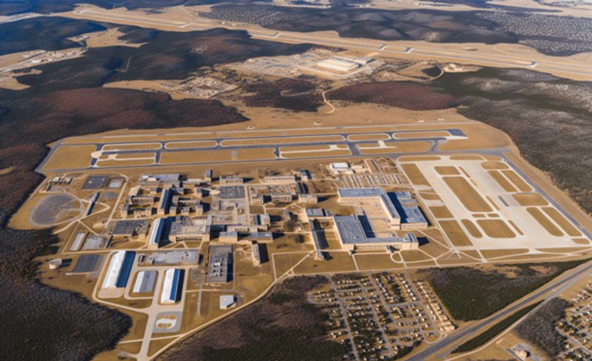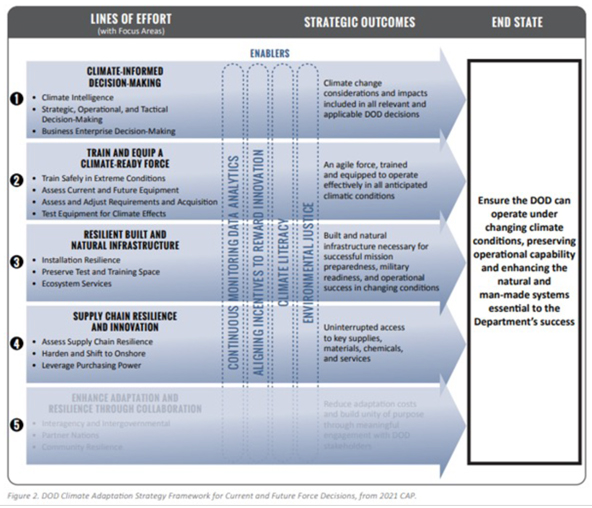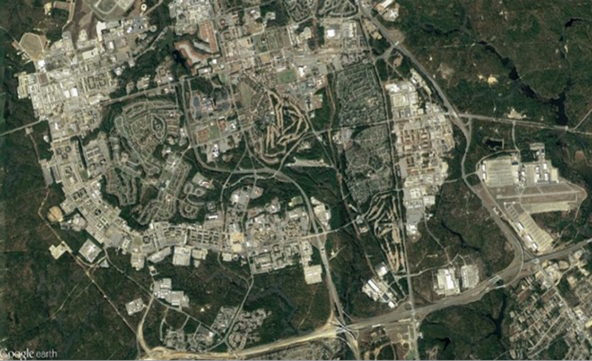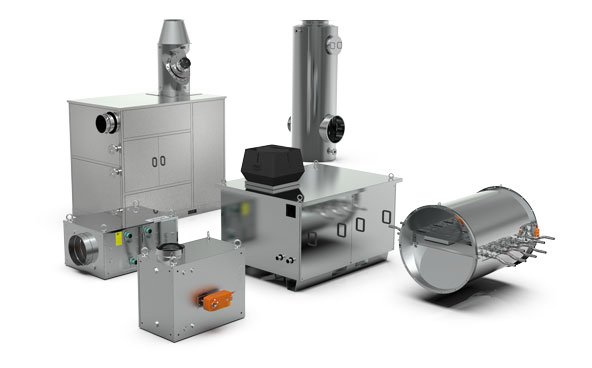
Energy security represents one of the most pressing concerns for military installations. According to Department of Defense (DoD) reports, military facilities consume approximately 30 billion Kwh of energy annually or 53% of the DOD’s entire energy consumption. Heating, in particular, consumes a large chunk of energy resources but is necessary for both personnel welfare and equipment maintenance. This substantial energy footprint not only creates budgetary pressure but also potential vulnerabilities if external energy supplies are disrupted.

Figure: Scope 1 and 2 emissions from FY 2010-2021, with the 2008 baseline.
The DOD is already prioritizing energy diversification to reduce dependence on civilian energy systems. Long-term solutions, like small modular reactors (SMRs), show promise for base-level energy independence. But at present, widespread implementation of such a solution remains years away. There’s an urgent need for practical, cost-effective energy efficiency measures that can be implemented quickly.
The financial implications of base operations are also significant. The DoD spends billions each year on facility energy expenses, with a full third dedicated solely to heating and cooling buildings. These costs divert resources from mission-critical operations and training.
Air-to-Water Waste Heat Recovery (ATW WHR) technology offers an elegant solution to these challenges by capturing thermal energy that would otherwise be lost to the atmosphere. These systems work by extracting heat from waste air streams – such as HVAC exhaust, kitchen ventilation, data center cooling systems, and industrial processes – and transferring that energy to water. The captured thermal energy doesn't go to waste. Once transferred to water, this recovered heat can be immediately redirected to numerous applications across the base.
What makes ATW WHR particularly valuable for military installations is its modularity and adaptability. Systems can be sized to match specific applications—from small, building-level solutions to large, centralized recovery networks. They can be retrofitted to existing infrastructure with minimal disruption to operations, a critical consideration for facilities that must maintain continuous readiness.
ATW WHR systems meet military bases' needs on multiple levels, from reducing costs and energy use to supporting operational goals:

Military bases range dramatically in size and scope – from massive installations like Fort Liberty (North Carolina), spanning over 250 square miles with 50,000+ personnel, to medium-sized bases covering 5-10 square miles with several thousand service members. These facilities contain hundreds of buildings requiring year-round climate control.

Many larger bases utilize centralized steam or hot water systems where waste heat recovery can be integrated at scale. These central boiler plants can achieve significant energy savings through staged heat recovery systems that capture thermal energy at multiple points in the distribution network. For installations with decentralized infrastructure like Naval Station Norfolk (Virginia), building-level WHR systems make more sense. Here, smaller heat recovery units can capture waste heat from the hundreds of individual HVAC systems. Barracks and family housing units – which might house 1,500-2,500 personnel on a mid-sized base – consume enormous quantities of hot water. If heat is recovered from HVAC systems, it can be repurposed to preheat this water.
Data centers operate around the clock and require around 15 to 30 MW of power, with cooling systems working constantly to remove up to 20 to 50 MW of heat. Similarly, communications command centers housing satellite uplink equipment and secure telecommunications equipment also offer a rich source of waste heat. ATW heat recovery systems can capture this thermal energy to supply hot water to nearby facilities without additional energy inputs – effectively getting double duty from every kilowatt.
A typical Army or Air Force base maintains hundreds to thousands of vehicles, from tactical Humvees to heavy transport trucks and specialized equipment. Fort Carson (Colorado), for example, houses maintenance facilities spanning over 130,000 square feet with more than 50 repair bays operating 16+ hours daily.
These facilities rely on industrial-scale compressed air systems (typically 75-100 HP compressors) that generate substantial heat during operation. This energy can be collected and repurposed to heat thousands of square feet of workspace during the winter months.
Military dining facilities (DFACs) operate on an industrial scale. Fort Benning's largest DFAC serves over 13,000 meals daily, while a typical brigade dining facility might prepare 3,000-5,000 meals per day across multiple service periods.
These operations rely on substantial refrigeration infrastructure. A typical military DFAC requires around 30-50 tons of refrigeration capacity across walk-in coolers, freezers, and service line units. This equipment can generate around 1.2 million BTUs of waste heat each day, which is conventionally vented outside. Kitchen exhaust ventilation systems placed over cooking equipment are also excellent sources of 110-120 °F waste heat. These heat sources represent prime recovery opportunities. By implementing ATW WHR systems, bases can capture this otherwise wasted thermal energy to pre-heat water for dishwashing operations that consume thousands of gallons of 140 °F water daily.
Like everything else on a military base, laundry operations function on a massive scale. While soldiers typically handle their own personal laundry, they rely on base industrial washers and dryers that collectively process thousands of pounds of textiles daily.

The hot air exhausted from industrial dryers (between 140 to 160 °F) contains recoverable heat that can preheat water or air for other processes. Given the continuous operation of military laundry facilities, these savings compound significantly over time. The reliable and predictable nature of laundry operations makes them particularly suitable for waste heat recovery systems that can be sized and optimized for consistent performance.
ENERVEX Air-to-water waste heat recovery represents a strategic force multiplier for military installations. These systems deliver triple-bottom-line benefits: enhanced mission capability through improved energy resilience, significant cost savings that can be redirected to operational priorities, and reduced environmental impact.
ENERVEX offers military-ready waste heat recovery solutions that align perfectly with base requirements. Our VHX Economizer systems can recover up to 80% of waste heat while delivering 200-300% more savings than traditional economizers. With payback periods typically under two years, our systems represent one of the most cost-effective energy improvements available to military installations today.

ENERVEX's turnkey RHX Heat Exchanger Systems provide comprehensive solutions that capture and recycle excess heat from multiple processes simultaneously. These systems not only generate immediate savings but also contribute significantly to DoD sustainability goals by reducing carbon emissions. Interested?
Contact ENERVEX today for a customized assessment of your base’s waste heat recovery potential.